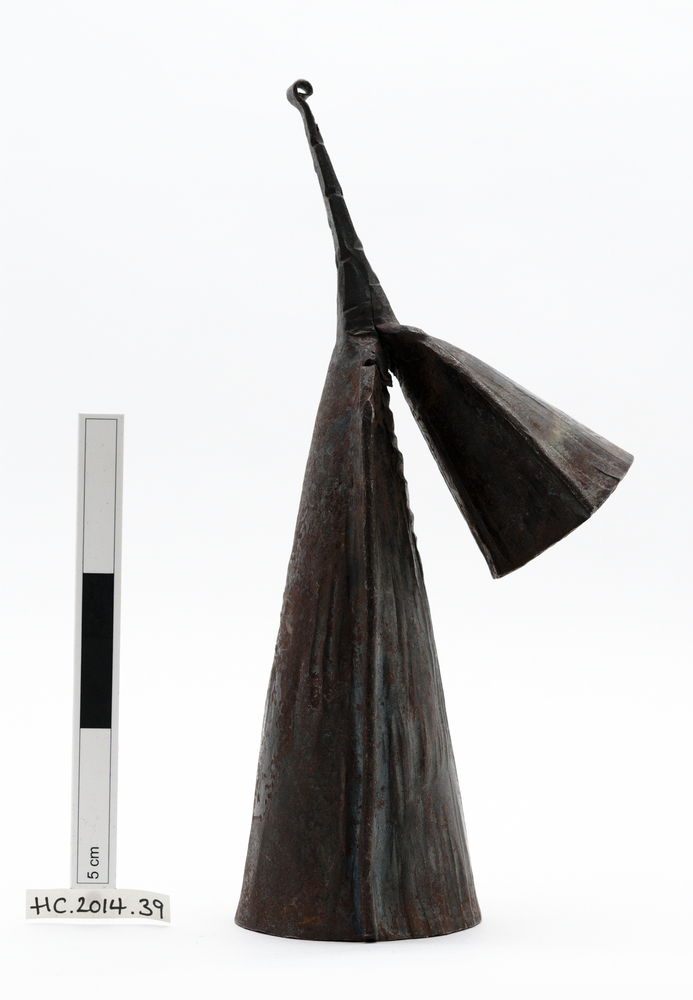Djembe drum
This djembe drum is originally from West Africa and is played with bare hands.
According to the Bambara people in Mali, the name comes from the saying ‘everyone gather together in peace’.
In the Bambara language, ‘dje’ is the verb for gather and ‘be’ is peace.
It’s a very versatile drum, and can produce a range of sounds. It’s very loud, meaning that it can be heard over percussion ensembles.
Traditionally the djembe is played by men – women can and do play the djembe but it’s uncommon.
Many master drummers share/have stories about the original djembe. Blacksmiths made the first djembe’s, making them to fit to the drummer. As the blacksmith cut the tree down for the djembe they would make offerings to the spirits for the trees being cut down.
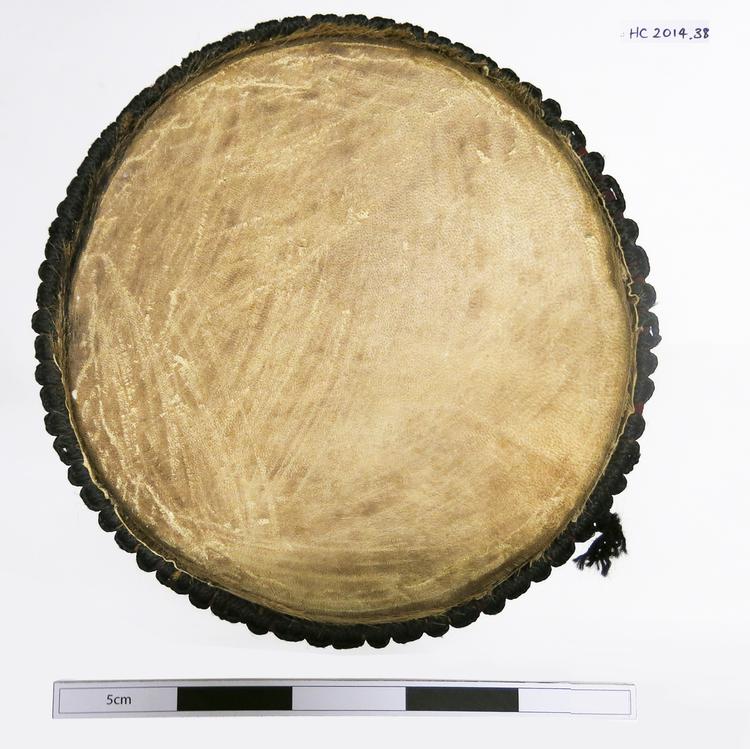
djembe
Musical Instruments
Mbira dza vadzimu
This mbira has 22 keys, or lameallae, made from scrap iron. These keys are plucked by the fingers and thumbs.
It is traditionally played by the Shona-speaking people of Zimbabwe, as part of religious ceremonies, where it is thought to attract ancestral spirits.
Usually two or more people play repeated patterns against each other. It is played held in the hand, using the thumb, or left or right forefinger to pluck the keys.
The name translates as ‘voice of the ancestors’.
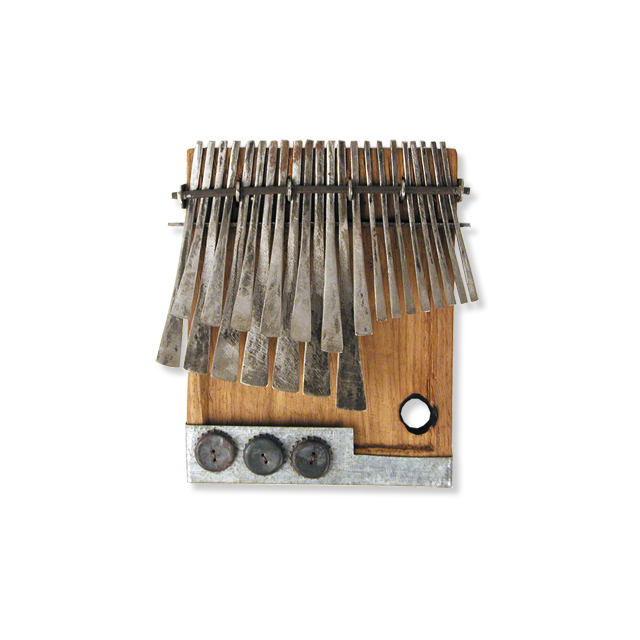
122.11
Musical Instruments
Claves/palitos
Claves such as these are played by being struck together. In Spanish Clave means clef, key, or keystone.
Their origins are thought to come from African cultures, bought to Cuba by enslaved people taken to the country.
Claves may have been made from wooden pegs (clajivas) used in wood construction of the time, especially in rapidly expanding slave ports such as Havana.
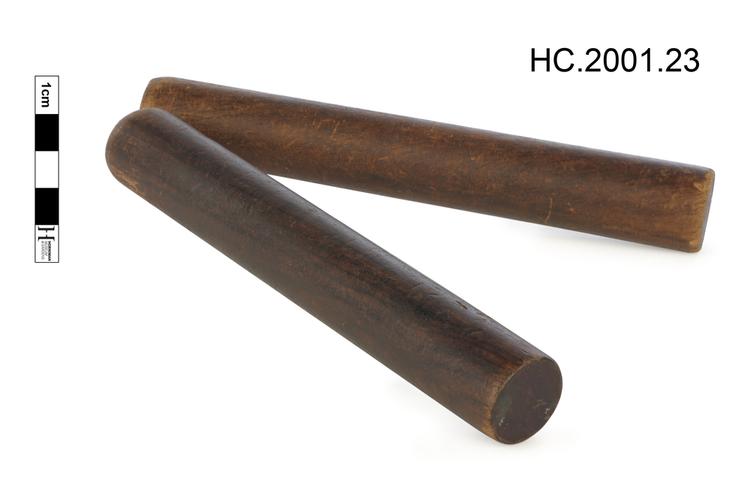
palitos, struck idiophone
Musical Instruments
Tabla
This is a dayan drum, the right side drum of the tabla set. Tabla is the main percussion instrument in Hindustani classical music, and comes from the Indian subcontinent.
Tabla is played in folk music in India, Bangladesh, Pakistan, and more. Players use a mix of fingers and palms to create a variety of different sounds.
The word tabla likely comes from the Arabic word for table – tabl.
The smaller drum – daya – creates treble and tonal sounds whilst the larger drum – bayan – produces bass.
Legend is that the tabla came from a two headed drum being dropped and broken into two pieces 500 years ago.
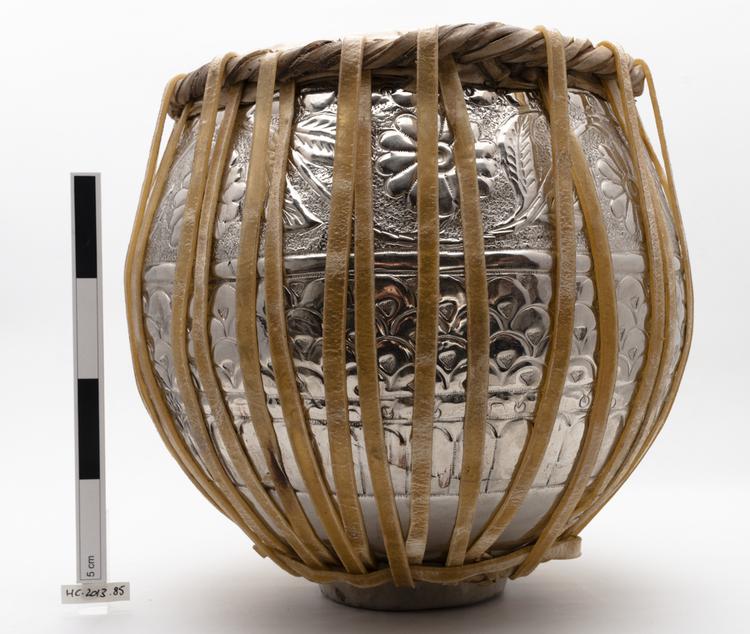
drum; tabla
Musical Instruments
Bell
This Gankoqui bell is played by the Ewe people of Ghana and Togo and is made of forged iron. The larger of the bells is lower pitched, whilst the smaller is higher pitched.
The bell usually plays a simple pattern, which repeats throughout the piece. It’s this pattern around which every other instrument in the ensemble orientates itself.
